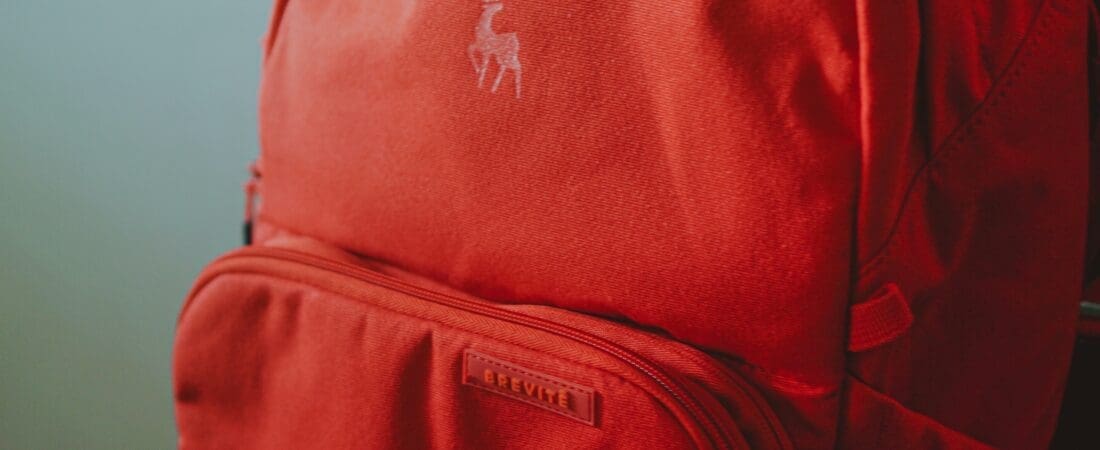Introduction to Bookbag Selection

In this guide, we will help you find the best bookbag for school that meets all your needs. A well-chosen bookbag not only serves as a means to carry essential supplies but also impacts comfort, organization, and overall convenience throughout the school day. Students often find themselves carrying a variety of materials such as textbooks, notebooks, stationery, and digital devices. Therefore, it is imperative to select a bookbag that accommodates these needs while ensuring ease of transport.
Comfort is one of the primary factors to consider when choosing a bookbag. Given that students may need to wear the bag for extended periods, options that feature padded straps, ergonomic designs, and adjustable sizing can greatly enhance the experience by distributing weight evenly across the back. Failure to consider comfort can lead to physical strain, ultimately affecting a student’s concentration and performance in class.
Moreover, organization plays a significant role in the utility of a school bookbag. Many contemporary options come with multiple compartments and pockets, enabling students to categorize their items effectively. A well-organized bookbag allows students to locate their materials quickly, thereby minimizing distractions and maximizing time for learning. Features such as dedicated laptop sleeves, side pockets for water bottles, and pen holders may seem trivial but contribute immensely to an organized and functional school environment.
Durability is another essential consideration, particularly in relation to the wear and tear that school bags are likely to experience. Choosing high-quality materials can ensure that the bookbag withstands the rigors of daily use, providing long-term value. In summary, the right bookbag is not merely an accessory but a vital tool that enhances a student’s educational experience. As this guide progresses, we will delve deeper into specific features that should be considered when selecting the ideal bookbag for school.
Consider the Size and Capacity

Choosing the right bookbag for school is not solely a matter of style; it fundamentally hinges on the size and capacity of the bag. A student’s daily needs must dictate the dimensions and organizational capabilities of their bookbag, ensuring that it can adequately accommodate all essential items such as textbooks, notebooks, writing implements, and technological devices like laptops or tablets.
To effectively assess the required size for a bookbag, one must first consider the items typically carried during a school day. For instance, most students will have several textbooks across different subjects, along with notebooks for note-taking and perhaps a planner to help organize assignments. Additionally, more students are incorporating technological devices into their school routine, which necessitates careful planning regarding the dimensions of their bookbag to prevent potential damage to these sensitive items.
When evaluating capacity, it is crucial to balance functionality with comfort. A bag that is too large may encourage students to carry unnecessary items, leading to excessive weight and discomfort during transportation. Conversely, a bag that is too small may result in a frustrating experience—items may need to be left behind, or the bag may become overstuffed, risking damage to the contents. Therefore, a well-sized bookbag should have adequate room for daily essentials while remaining manageable and lightweight.
One effective strategy is to organize the required items into categories before selecting a bookbag. This process helps clarify the necessary space needed for each category, thus enabling a more informed choice. Ultimately, a thoughtfully chosen bookbag that suits a student’s unique needs in both size and capacity will enhance their overall school experience and ease the burden of daily carrying.
Material and Durability

When selecting a bookbag for school, one of the most crucial factors to consider is the material from which it is constructed. The type of material not only impacts the bag’s durability but also its ability to withstand the rigors of daily use as well as various weather conditions. Commonly used materials for bookbags include polyester, nylon, and canvas, each offering unique advantages and disadvantages.
Polyester is a popular choice for many bookbags due to its affordability, lightweight nature, and excellent resistance to water. This synthetic fabric is also known for its tear-resistant properties, making it suitable for the everyday wear and tear typical in academic environments. Polyester bookbags can often be treated with water-repellent coatings, further enhancing their ability to protect contents from moisture.
Nylon, another widely used material, is recognized for its durability and strength. Nylon fabric tends to be more robust than polyester, providing excellent resistance to abrasions and punctures. It also typically offers enhanced weather resistance, making it a great option for students who may encounter rain or snow. However, it is generally heavier than polyester, which is an important consideration if students need to carry their bookbags for extended periods.
Canvas, while less prevalent in modern bookbags, has its own set of benefits. Made from natural fibers, canvas is known for its sturdiness and classic appeal. While it may not be as water-resistant as synthetic materials, specialized treatments can enhance its weather resistance. The breathability of canvas also makes it a comfortable choice for carrying various school supplies.
In choosing the right bookbag, it is essential to evaluate how these materials fit within one’s lifestyle and needs. Consideration should be given to the expected weather conditions, the weight of the items being carried, and the anticipated wear and tear, ensuring that the selected material can provide the necessary durability while safeguarding the contents effectively.
Comfort and Ergonomics
Choosing the Best Bookbag for School

When selecting a bookbag for school, prioritizing comfort and ergonomics is essential for ensuring a positive experience, particularly for students who often carry heavy loads. A well-designed bookbag can significantly reduce physical strain and enhance overall usability, making it a crucial factor in the selection process.
One of the key features to consider in a bookbag is padded straps. Straps that are cushioned can relieve pressure on the shoulders, especially when the bag is fully loaded with books and supplies. Furthermore, adjustable strap lengths are vital, as they allow users to customize the fit based on their body type and personal preferences. A properly adjusted strap ensures the weight is evenly distributed, minimizing the risk of discomfort or injury.
Back support is another important aspect of ergonomic bookbag design. Look for models that incorporate padded back panels, which not only provide cushioning but also promote better posture. Some bookbags even feature contoured designs that align with the natural curvature of the spine, further enhancing comfort during extended wear. When carrying heavy items, such support can help prevent long-term issues such as back pain or muscle strain.
To achieve optimal comfort with a bookbag, it is crucial to properly fit and adjust the straps. Start by loosening the straps and placing the bag on your back, ensuring that it sits high on the back rather than sagging low, which can lead to imbalance. Then, adjust the straps so that the bag is snug against your body, making sure it does not pull on your shoulders or create gaps that might lead to uneven weight distribution. The goal is to create a comfortable fit that allows freedom of movement without sacrificing support.
By focusing on these essential comfort and ergonomic features, students can select a bookbag that not only meets their aesthetic preferences but also supports their physical well-being, ultimately enhancing their overall school experience.
Organization Features

When selecting a bookbag for school, organization features play a crucial role in determining its functionality and convenience. A well-organized bookbag not only simplifies access to school supplies but also enhances productivity by allowing students to find what they need quickly. Key organizational features include compartments, pockets, and dividers, each serving distinct purposes for efficient storage and retrieval of items.
One of the primary components to consider is the interior compartment design. Multiple compartments allow students to categorize their supplies effectively. For example, having a dedicated compartment for textbooks can prevent damage to electronic devices when both are placed in the same space. Additionally, compartments specifically designed for laptops or tablets offer protection while also ensuring easy access. Furthermore, separate organizational pockets for stationery items such as pens, pencils, and rulers can significantly reduce clutter, making it easier to maintain a neat setup.
Another vital feature is the presence of exterior pockets. These can be particularly beneficial for items that need to be accessed frequently, such as water bottles or bus passes. External mesh pockets or zippered pockets enable students to store items they require on the go without the need to open the main bag. Moreover, reflective pockets enhance visibility and safety during late hours, making them an essential consideration for students navigating home in low-light conditions.
Lastly, dividers within main compartments can assist in further structuring the space, allowing for an organized arrangement of books and supplies. This segmentation can help avoid the chaotic search for materials during class transitions or study sessions. Ultimately, when choosing a school bookbag, prioritize organizational features that cater to personal needs, as this will directly influence daily productivity and overall efficiency in academic pursuits.
Style and Personal Expression

When selecting a bookbag for school, style and personal expression play a crucial role in the decision-making process. A bookbag is much more than a functional item designed to carry books and supplies; it serves as a reflection of one’s personality and individual taste. In recent years, trends in bookbag design have evolved significantly, offering students an array of styles, colors, and patterns to choose from. This variety enables students to express their unique identities through their choice of accessories.
Contemporary styles range from sleek minimalist designs to vibrant and eye-catching patterns. Many students prefer backpacks with bold colors or unique graphics that can serve as conversation starters, while others may lean toward more subdued colors that can blend seamlessly into their school environment. Recognizing current trends can help students identify what is in vogue, enabling them to choose a bookbag that not only meets their functional needs but also aligns with popular fashion choices among peers.
Moreover, incorporating personal style into the choice of a bookbag can bolster a student’s confidence. When students feel that their bookbag resonates with their personal taste, it can enhance their overall school experience. However, it is essential to balance style with practicality. Students should consider factors such as size, durability, and organization when selecting a bookbag. Features like padded straps, multiple compartments, and water-resistant materials can enhance functionality, ensuring that style does not compromise usability.
Ultimately, by thoughtfully considering both style and practicality, students can select a bookbag that embodies their personal expression while fulfilling their everyday needs. Being attuned to trends and reflecting on personal preferences can lead to a satisfying choice that makes both a fashion statement and a practical addition to their school gear.
Safety and Security Features

When selecting a bookbag for school, it is crucial to consider safety and security features that can protect both a student’s belongings and enhance their personal safety during commutes. One of the primary elements to look for in a bookbag is anti-theft compartments. These compartments are designed with innovative locking mechanisms and hidden zippers, making it difficult for opportunistic thieves to access valuable items such as laptops, tablets, and wallets. Anti-theft features provide peace of mind, particularly in crowded environments like public transportation and school hallways.
Additionally, reflective materials are an essential consideration for any school bag. Bookbags featuring reflective strips or designs improve visibility during low-light conditions, such as early morning or late afternoon commutes. This added visibility helps ensure that students are seen by drivers and pedestrians, thereby reducing the risk of accidents. Investing in a bookbag with these reflective elements can be a significant step in enhancing safety while traveling to and from school.
Furthermore, padded laptop sleeves are another feature worth examining. A separate compartment with padding is essential for safeguarding devices against impact and drops. Given the increasing reliance on technology for educational purposes, ensuring that laptops and tablets are secure and protected from physical damage is paramount. A well-padded sleeve can prevent damage that might occur due to jostling or bumping, particularly when navigating crowded corridors or public spaces.
Incorporating these safety and security features into the selection process can significantly impact a student’s daily routine. By prioritizing anti-theft capabilities, reflective materials, and protective compartments, parents and students alike can choose a bookbag that not only serves its primary purpose of carrying educational materials but also promotes safety and security on the way to school.
Price Range and Budget Considerations

When selecting a bookbag for school, price is a significant factor to consider. Bookbags on the market come in a variety of price ranges, typically categorized as budget-friendly, mid-range, and high-end options. Budget-friendly backpacks generally cost between $20 to $50 and are ideal for students looking for basic features without extensive durability or specialized compartments. These bags often serve well for younger students or those who may not require too much space or specialized organization. However, while they may be economical, it is essential to assess if the quality meets your needs for daily use.
Mid-range bookbags, priced between $50 to $100, often provide a balance between cost and quality. These bags typically feature better materials, ergonomic designs, and additional compartments that enhance functionality. Investing in this range could be beneficial for high school students or those engaged in various extracurricular activities, where increased durability and organization play a crucial role. It might justify the higher expense by lasting multiple school years.
High-end backpacks, usually exceeding $100, cater to specific needs or styles and often come from well-known brands recognized for their durability and ergonomics. These bags usually feature advanced materials, reinforced stitching, and ergonomic designs promoting comfort. For students who carry hefty loads or have specific needs such as electronics, investing in a high-end bookbag may prove to be advantageous in the long run.
Ultimately, the key to finding the right bookbag lies in evaluating personal requirements and determining how much one is willing to spend. It is advisable to consider factors such as frequency of use, necessary features, and long-term needs, ensuring that the selection matches both practical requirements and budget constraints. With careful analysis, one can discover a quality bag that meets educational goals without straining financial resources.
Conclusion and Final Recommendations

Choosing the right bookbag for school requires careful consideration of various factors that align with one’s personal needs and academic lifestyle. Throughout this guide, we have explored essential features to keep in mind, including comfort, size, organization, and durability. Each of these components plays a vital role in ensuring that students not only carry their books and supplies efficiently but do so in a manner that supports their daily activities and overall academic performance.
When selecting a bookbag, it is essential to prioritize what matters most to you. For instance, if you have to transport a large number of textbooks and materials, opting for a larger bag with ample storage compartments may be advantageous. Conversely, if you primarily carry lightweight supplies, a smaller, more streamlined option could be sufficient. Additionally, consider the ergonomics of the design, particularly if you walk or bike to school, as a well-fitted bag can significantly impact your comfort and posture. Look for padded straps and adjustable features to ensure a comfortable fit.
Furthermore, durability should not be overlooked; investing in a sturdy bookbag made from high-quality materials can save you from frequent replacements and additional expenses down the road. Color and style are also important, as they allow personal expression while still being functional. With so many available options, it is recommended to create a list of must-have features that resonate with your lifestyle.
In summary, the task of finding the ideal bookbag may seem daunting, but with a clear understanding of your needs and preferences, it transforms into a manageable decision-making process. Begin your search today, explore different models, and choose a bag that will assist you in navigating your academic journey with ease and style.

